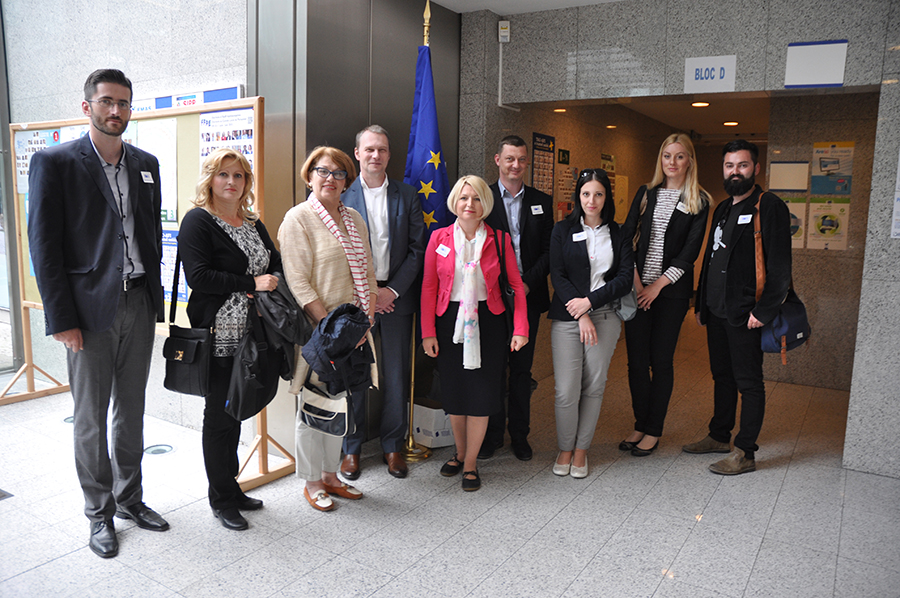Following an invitation of Ambassador Igor Davidović, head of the Mission of Bosnia and Herzegovina to the EU, delegations of the Museum of Contemporary Art of the Republic of Srpska and the Museum of the Republic of Srpska travelled to Brussels for an official visit organised by the Mission. The reason for the visit was the presentation of culture institutions of the Republic of Srpska and the building up of contacts to join projects in the frame of the EU programme "Creative Europe".
There was an official reception and presentation of the two institutions in the premises of the Mission of Bosnia and Herzegovina to the EU, attended by Nedeljko Čubrilović, President of the National Assembly of the Republic of Srpska, high officials of the Directorate-General for Education and Culture and the Directorate-General for Neighbourhood and Enlargement Negotiations of the European Commission, representatives of the European Parliament and UNESCO, the ambassadors of Serbia, Montenegro, Macedonia, Hungary, Sweden and the Netherlands, representatives of the European Commission Service for Foreign Policy Instruments, and many members of the diplomatic corps.
The Museum of Contemporary Art of the Republic of Srpska presented its history, achievements, the most important aspects of its work, as well as its future action strategy. The central part of the presentation was dedicated to the organisation and staging of the Pavilion of Bosnia and Herzegovina at the 55th Venice Biennale, as the most important international project implemented by the Museum to this date.
The delegations had a meeting with Rob van Iersel, a political officer of the Directorate-General for Culture and Education and coordinator of “Creative Europeˮ for non-EU countries, and Silvia Calbi, Creative Europe desk coordinator at European Commission. At the meeting participants discussed the possibility of Bosnian-Herzegovinian institutions of culture joining the "Creative Europe" programme and analysed the current situation regarding this process, since there is no Creative Europe desk in Bosnia and Herzegovina. Both museums spoke about their experiences so far and about chances to connect and form partnerships with other museums and institutions in the region, in order for them to be able to jointly apply for "Creative Europe" projects.
The work visit to Brussels included many more activities, such as meeting Ms Milena Gvozden, representative of the Mission of the Kingdom of Belgium to the EU, and the management and colleagues from the Horta Museum. There were also opportunities to visit the major Belgian museums and cultural sights.
http://msurs.net/index.php/en/dogadjaji-6/arhiva/dog2015/100-predst-vlj-nje-muzej-s-vremene-umjetnosti-republike-srpske-u-briselu-2#sigProIde56bb0ef57


